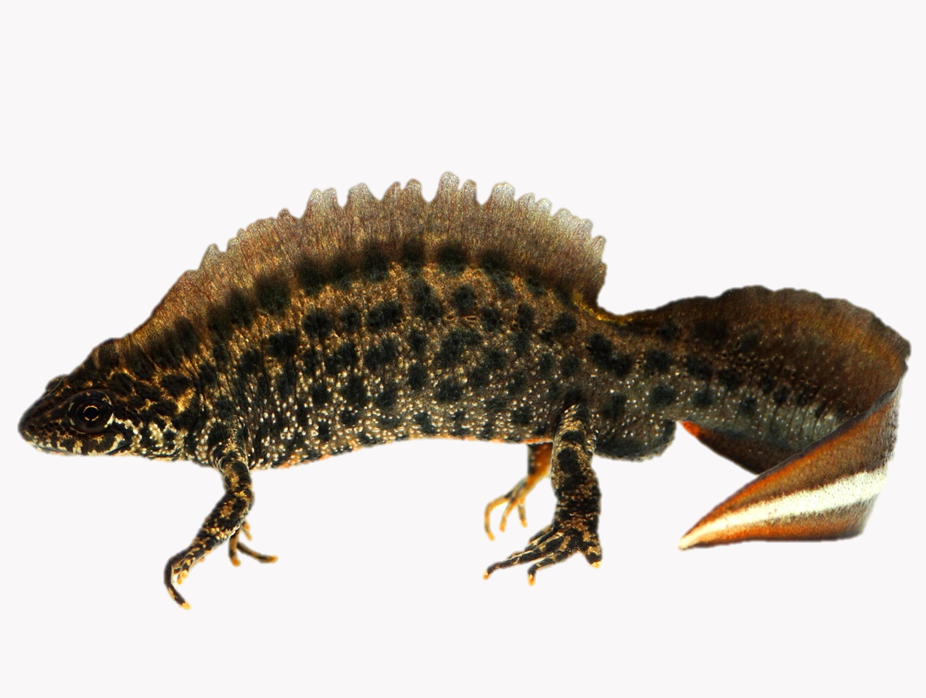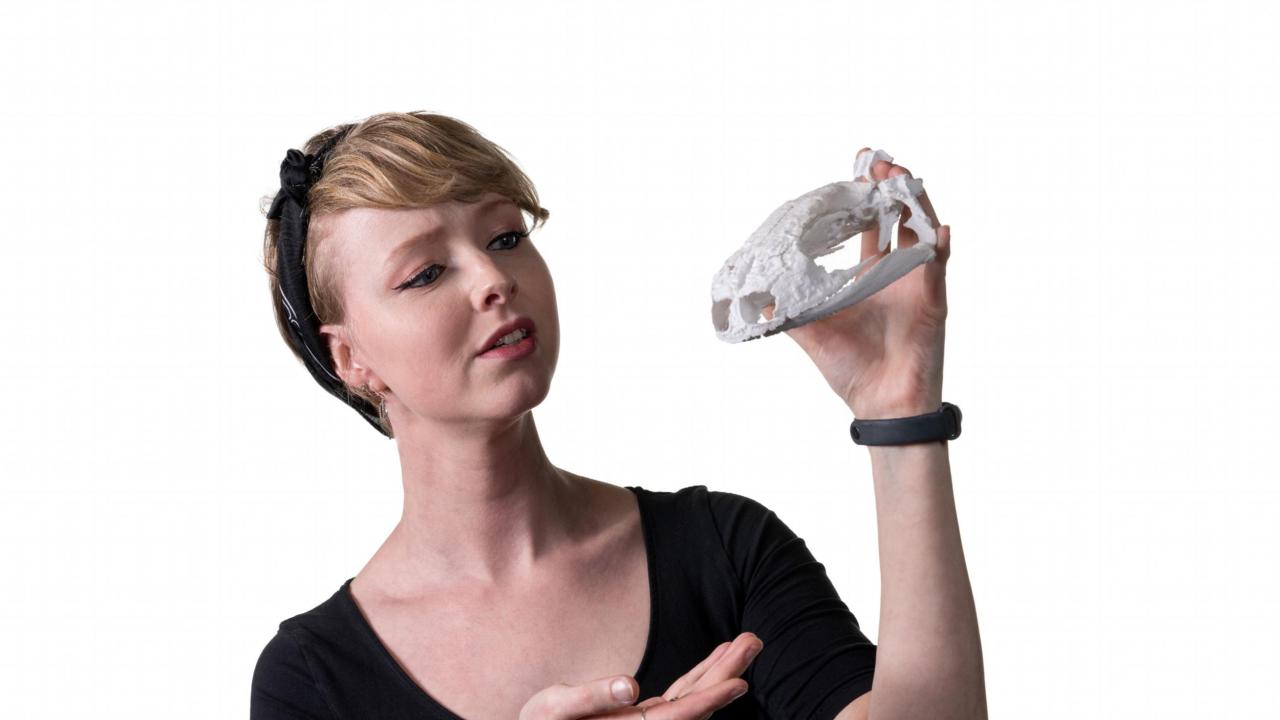Ik ben gefascineerd door de evolutionaire en ecologische mechanismen die de natuurlijke wereld vormgeven. In het bijzonder in wat er gebeurt als soorten bedreigd worden, of populaties geïsoleerd raken. Als geneticus duik ik maar al te graag in de DNA code van met name dieren. Om uit te zoeken hoe alles precies werkt, zodat ik kan helpen de natuur beter te begrijpen en beschermen. Ik houd mij dan ook graag bezig - naast onderzoek doen - met natuurbehoud, biodiversiteitsmonitoring en wetenschapscommunicatie.
Keywords
Evolutie, ecologie, natuurbehoud, genetica, genomica, inteelt, mutaties, evo-devo, embryologie, amfibieën, invasieve soorten, exoten, wetenschapscommunicatie, scicomm, gedragsverandering, biodiversiteitsmonitoring, DNA, zoölogie, dieren
BalancedLethal Systems
 Tijdens mijn promotie- en postdoctorale onderzoeksprojecten, werkte ik bij het Wielstra lab (ERC Starting Grant-gefinancierd onderzoek). Samen met collega's bestudeerde ik de genomica van het best bekende geval van een balanced lethal system: oftewel, een "gebalanceerd, dodelijk systeem" genaamd chromosoom 1 syndroom in Triturus salamanders. Gebalanceerde dodelijke systemen worden beschouwd als een evolutionaire "fout", omdat natuurlijke selectie niet meer in staat is om de bijbehorende recessieve, dodelijke allelen te verwijderen. In samenwerking met IBL onderzocht ik de letaliteit en de evolutionaire oorsprong van dit systeem. Benieuwd naar meer? Klik hier om meer te lezen over balanced lethal systems!
Tijdens mijn promotie- en postdoctorale onderzoeksprojecten, werkte ik bij het Wielstra lab (ERC Starting Grant-gefinancierd onderzoek). Samen met collega's bestudeerde ik de genomica van het best bekende geval van een balanced lethal system: oftewel, een "gebalanceerd, dodelijk systeem" genaamd chromosoom 1 syndroom in Triturus salamanders. Gebalanceerde dodelijke systemen worden beschouwd als een evolutionaire "fout", omdat natuurlijke selectie niet meer in staat is om de bijbehorende recessieve, dodelijke allelen te verwijderen. In samenwerking met IBL onderzocht ik de letaliteit en de evolutionaire oorsprong van dit systeem. Benieuwd naar meer? Klik hier om meer te lezen over balanced lethal systems!
WetenschapsCommunicatie
Hoe is het om te werken als een wetenschapper binnen de genomica en de ecologie - voor zowel Naturalis als voor andere organisaties? En wat ik nu eigenlijk leer van de salamanders en de andere dieren die ik bestudeer? Ik vind het belangrijk om mijn kennis en ervaringen te delen met de wereld - en pak graag DNA als startpunt en uitgangspunt om uitleg te geven over de natuur wanneer ik op het podium of in de media verschijn!
Manon in de media (een selectie)
>> Éénvandaag persoonlijk interview 2025
>> NPO Radio 2 over vreemde geluiden en gedragingen van dieren 2024
>> Opkomen voor 'onpopulaire' dieren bij het NOS Jeugdjournaal 2024
>> Keuringsdienst Van Waarde KRO-NCRV 'Kikkerbillen onderzoek!' 2023
Manon's evolutie les bij Natuurlab
>> Hoe werkt evolutie Les 2: een dodelijk raadsel
Over DNA op YouTube (twee van meerdere afleveringen)
>> Manon's DNA talk 5: DNA barcoding van amfibieën
>> Manon's DNA talk 8: bandsalamanders zijn als olie en water
Meer video's (een selectie)
>> Universiteit van Nederland video 2025
>> Bioloog Manon de Visser over mangabeys
>> Spotlight Interview: Dieren DNA en salamander raadsels
>> KNAW video Faces of Science Award 2023
Blogs!
>> Werken met supercomputers
>> Persoonlijke blog (met de meest recente nieuwtjes!)

Belangrijkepublicaties
Awards & Prijzen:
- Aangewezen als 'Week van de Biologie 2024' ambassadeur, door het Nederlands Instituut voor Biologie (NIBI).
- Geselecteerd als 'Face of Science 2023' door de Koninklijke Nederlandse Akademie van Wetenschappen (KNAW), de Jonge Akademie, en NEMO Kennislink, na voor deze erkenning genomineerd te zijn door Associate Professor en mariene bioloog Dr Lisa Becking.
- "1st prize for one-minute pitch" at the Netherlands Society of Evolutionary Biology PhD & Postdoc meeting 2021 (NLSEB2021), for the pitch: "The balanced lethal system in Triturus: an evolutionary trap!"
- "3rd best oral presentation" at the Programming For Evolutionary Biology Conference 2021 (miniPEB2021), Freie Universität Berlin, for the talk: "Studying the lethality and evolutionary origin of the balanced lethal system in Triturus newts."
- "1st prize for oral presentation" within subtheme: Global Health - Humans and Animals" at the University of Copenhagen EuroLeague of Life Sciences (ELLS) Student Conference 2017, for the MSc project "The Importance of Genomics for the Conservation Management of the Critically Endangered Pygmy Hog (Porcula salvania)."
- "Best oral presentation" at the Benelux International Society of Applied Ethology (ISAE) meeting 2016, for the MSc project "The effect of exposure to visitors on stress in the critically endangered blue-eyed black lemur (Eulemur flavifrons) and other primate species at Apenheul Primate Park, the Netherlands."
Wetenschappelijke Publicaties:
- Meilink, W.R.M., Cvijanović, M., De Visser, M.C., France, J., Ivanović, A., Theodoropoulos, A., Vučić, T., Wielstra, B. (2025). Exposing selection and genetic linkage in the evolutionary enigmatic balanced lethal system in Triturus newts. Ecology and Evolution 15(6), e71591.
- Koster, S., Polanen, R., Avcı, A., Bogaerts, S., Bozkurt, E., Goudarzi, F., Hemami, M.-R., Olgun, K., Pasmans, F., Steinfartz, S., Üzüm, N., De Visser, M.C., France, J., Theodoropoulos, A., Wielstra, B. (2025). Discordance between phylogenomic methods in Near Eastern mountain newts (Neurergus, Salamandridae). Molecular Phylogenetics and Evolution 211, 108386.
- De Visser*, M.C., Meilink*, W.R.M., Theodoropoulos, A., Fahrbach, M., Wielstra, B. (2025) Determining zygosity with multiplex Kompetitive Allele-Specific PCR (mxKASP) genotyping. Ecology and Evolution 15(6), e71642.
- Mars, J., Koster, S., Babik, W., France, J., Kalaentzis, K., Kazilas, C., Martínez-Solano, I., De Visser, M.C., Wielstra, B. (2025). Phylogenomics yields new systematic and taxonomical insights for Lissotriton newts, a genus with a strong legacy of introgressive hybridization. Molecular Phylogenetics and Evolution 204: 108282
- Kalaentzis, K., Kazilas, C., Arntzen, J.W., Bogaerts, S., Franzen, M., Litvinchuk, S.N., Olgun, K., France, J., De Visser, M.C., Wielstra, B. (2025). Phylogenomics resolves the puzzling phylogeny of banded newts (genus Ommatotriton). Molecular Phylogenetics and Evolution 203: 108237.
- De Visser, M., France, J., Paulouskaya, O., Brown, T., Fahrbach, M., Van der Ploeg, C., Wielstra, B. (2024) Conserved gene content and unique phylogenetic history characterize the 'bloopergene' underlying Triturus' balanced lethal system, bioRxiv preprint 2024.10. 25.620277.
- France, J., De Visser, M., Paulouskaya, O., Arntzen, J.W., Babik, W., Cvijanović., M., Ivanović, A., Smith, J., Vučić, T., Wielstra, B. (2024) Genomic evidence suggests the balanced lethal system in Triturus newts originated in an instantaneous speciation event, bioRxiv preprint 2024.10. 29.620207.
- De Visser, M.C., France, J., McCartney-Melstad, E., Bucciarelli, G.,M., Theodoropoulos, A., Shaffer, H.B., Wielstra, B. (2024) NewtCap: an efficient target capture approach to boost genomic studies in Salamandridae (True Salamanders and Newts), bioRxiv preprint 2024.10. 25.620290.
- De Visser, M., Van der Ploeg, C., Cvijanović, M., Vučić, T., Theodoropoulos, A., Wielstra, B. (2024) PAV-spotter: using signal cross-correlations to identify Presence/Absence Variation in target capture data, bioRxiv preprint 2024.10. 25.620064.
- Kazilas, C., Dufresnes, C., France, J., Kalaentzis, K., Martínez-Solano, I., De Visser, M.C., Anrtzen, J.W., Wielstra, B. (2024) Spatial genetic structure in European marbled newts revealed with target enrichment by sequence capture, Molecular Phylogenetics and Evolution 194: 108043.
- Kalaentzis K., Arntzen J.W., Aziz A., Van den Berg V., Beukema W., France J.M., Olgun K., Van Riemsdijk I., Üzüm N., De Visser M.C. & Wielstra B.M. (2023) Hybrid zone analysis confirms cryptic species of banded newt and does not support competitive displacement since secondary contact, Ecology and Evolution 13(9): e10442.
- Robbemont J., Van Veldhuijzen S., ..., De Visser M.C. & Wielstra B.M. (2023) An extended mtDNA phylogeography for the alpine newt illuminates the provenance of introduced populations, Amphibia-Reptilia 44(3): 347-361.
- Kuijt, M., Oskam, L., Den Boer, I., Dufresnes, C., France, J., Gilbert, M. J., De Visser, M.C., Struijk, R.P.J.H, Wielstra, B. (2023) The introduction of three cryptic tree frog species in the Dutch coastal dunes challenges conservation paradigms. Amphibia-Reptilia 44(1), 1-10.
- Koster, S., Prins, N., Dufresnes, C., France, J., De Visser, M.C., Struijk, R.P.J.H., Wielstra, B. (2023) The conservation paradox of an introduced population of a threatened species: spadefoot toads in the coastal dunes of the Netherlands. Amphibia-Reptilia 44(1), 11-18.
- De Brouwer, J., Helder, B., France, J., De Visser, M.C., Struijk, R.P.J.H., Wielstra, B. (2023) An isolated crested newt population in Dutch coastal dunes: distribution relict or introduction? Amphibia-Reptilia 44(1), 19-26.
- Vliegenthart, C., Van de Vrede, M., Den Boer, I., Gilbert, M., Lemmers, P., France, J., De Visser, M.C., Struijk, R.P.J.H., Wielstra, B. (2023) The limits of mtDNA barcoding for determining the provenance of invasive species: a midwife toad example. Amphibia-Reptilia 44(1), 27-33.
- Van der Groot, A., De Visser, M., Hiemstra, A.F. (2022) Smooth newts Lissotriton vulgaris observed hibernating in a waterfowl nest. Herpetological Bulletin: 162: 41-42.
- De Visser M., Prins E., Bosse M., Crooijmans R., Ter Meulen T. (2022). Maximum longevity and juvenile mortality in zoo-housed mangabeys. Zoo biology: 1-11.
- Fahrbach M., De Visser M.C., Wielstra B.M. The hybrid zone between the Italian and Northern crested newts (Triturus carnifex and T. cristatus) reaches Germany, Salamandra 57(3): 428-434.
- De Visser M.C., Liu, L., Bosse, M. (2021). Pygmy hogs, Current Biology 31(8):R366-R368.
- Liu, L., Bosse, M., Megens, H.J., De Visser, M.C., Groenen, M.A.M., Madsen, O. (2020) "Genetic consequences of long‐term small effective population size in the critically endangered pygmy hog." Evolutionary Applications 14:710-720.
- Van Tuijl, C., Van Bochove, K., De Visser, M.C. (2019). Genetic Structure of Badger Populations in a Fragmented Landscape: How Do Barriers Affect Populations on a Genetic Level? Lutra 62: 65-76.
* = Auteurs delen een eerste auteurschap / een gelijke bijdrage.
Populair Wetenschappelijke Publicaties:
- Wielstra, B.M., De Visser, M.C., Stark, T., Struijk, R.P.J.H. (2023) Herkomst van exotische Alpenwatersalamanders blootgelegd, Schubben & Slijm 15(3).
- Struijk, R.P.J.H., Prins, N., Koster, S., Putters, N., Jansen, N., Esselaar, J., De Visser, M.C., France, J.M., Wielstra, B.M. (2024) Knoflookpad in Callantsoog: verspreiding, voortplanting en geografische herkomst, RAVON 26(1): 2-5.
- De Visser, M.C., Prins, N., France, J.M., Struijk, R., Wielstra, B. (2023) Exotische amfibieën in de duinen ontmaskerd met mtDNA barcoding. Holland's Duinen 82(1): 25-29.
- Wielstra, B.M., Den Boer, I., France, J.M., De Visser, M.C., Struijk, R. (2023) MtDNA barcoding van exotische amfibieën in de duinen. RAVON 89(2): 26-29.
- Struijk, R.P.J.H., Backx, B., Demirkapu, B., De Visser, M., Wielstra, B. (2022). 'Rise and fall' van een populatie westelijke smaragdhagedissen in Scheveningen. RAVON 24(4): 24-27.
- Helder B., De Brouwer J., Ouwehand J., De Visser M. & Wielstra B. (2021). Koi-kamsalamander, Schubben & Slijm (48): 8.
- Meilink W.R.M., France J., De Visser M. C. & Wielstra B. (2021). Balanced Lethal Systems: An Evolutionary Mystery. Frontiers For Young Minds. 9:632945.
- De Visser M.C., France J.M., Meilink W.R.M. & Wielstra B.M. (2021). Een evolutionair raadsel: het dodelijke chromosoom 1 syndroom in Triturus-salamanders, RAVON 23(1): 9-12.
- Struijk R.P.J.H, Demirkapu B., De Visser M.C. & Wielstra B.M. (2021). Exotische smaragdhagedissen in de duinen bij Scheveningen, Kijk op Exoten (34): 12-13.